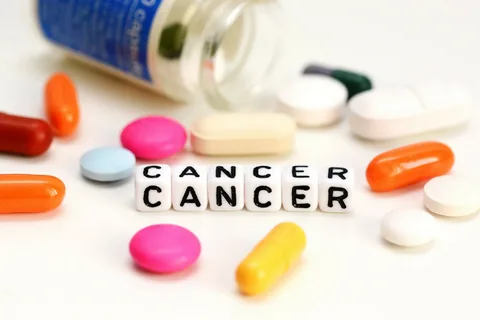Access to comprehensive healthcare, including cancer and STI screenings, is a fundamental aspect of well-being for everyone. However, for the LGBTQ health, healthcare needs often go beyond routine check-ups due to the unique physical, mental, and social health challenges they face. Unfortunately, many members of the LGBTQ community experience disparities in healthcare access and quality, leading to a significant number of individuals not receiving the screenings and preventive care they need.
Cancer screenings and STI screenings are crucial aspects of proactive healthcare, but due to stigma, misinformation, and a lack of tailored healthcare services, many LGBTQ individuals may face barriers to receiving these essential screenings. In this article, we will explore the importance of cancer and STI screenings for the LGBTQ community, the specific challenges that these individuals face in accessing these services, and strategies to improve healthcare outcomes.
The Importance of Cancer and STI Screenings for the LGBTQ Community
Cancer Screenings: Why They Matter for Everyone
Cancer can affect anyone, regardless of sexual orientation or gender identity. However, certain cancers are more prevalent in the LGBTQ community due to lifestyle factors, higher risks, and biological considerations. Cancer screenings are essential because they help detect cancer at an early, treatable stage, increasing the chances of successful treatment and improving overall outcomes.
Screenings for LGBTQ Individuals at Higher Risk
While all individuals should adhere to routine cancer screenings based on their age, gender, and health status, there are some specific cancer risks that are more pronounced in the LGBTQ community:
-
LGBTQ women (lesbians, bisexual women, and trans women) are more likely to delay or avoid breast cancer screenings due to lack of insurance, provider sensitivity, or fear of discrimination. Regular mammograms are important for breast cancer detection, and any delay in screening can lead to later-stage diagnoses.
-
Cervical cancer screenings, including Pap smears, are especially crucial for lesbian and bisexual women, who may experience reduced access to healthcare providers sensitive to their sexual and reproductive health needs.
-
Transgender individuals may have specific concerns regarding cancer screenings, particularly transgender women who may still be at risk for prostate cancer despite undergoing gender-affirming hormone therapy (HRT). Transgender men, especially those who have not undergone full gender-affirming surgery, need regular breast cancer screenings as they are still at risk.
-
Anal cancer is more common in individuals with HIV or those who engage in unprotected anal sex, regardless of gender identity. Gay and bisexual men, particularly those with HIV, need to be screened for HPV-related anal cancer, which is often under-screened in many healthcare systems.
Specific Cancer Screenings for the LGBTQ Community
LGBTQ individuals may face distinct challenges when it comes to cancer screenings. For example, many healthcare providers may not have culturally competent knowledge or be trained to deal with the unique needs of LGBTQ patients. This lack of training can result in missed screenings, delayed diagnoses, and worse outcomes.
Routine cancer screenings, including mammograms, Pap tests, prostate exams, and skin checks, should be encouraged, but LGBTQ individuals often encounter obstacles that may delay these screenings.
STI Screenings: A Lifesaving Measure for Sexual Health
Sexually transmitted infections (STIs) remain a significant health issue across all populations, but LGBTQ individuals, particularly gay and bisexual men, are disproportionately affected by certain STIs due to factors such as unprotected sex, multiple sexual partners, and biological vulnerabilities. Regular STI screenings are vital for detecting infections early and preventing further transmission.
The Higher Risk of STIs in the LGBTQ Community
-
HIV/AIDS remains a critical health concern, particularly for gay and bisexual men. Despite the effectiveness of antiretroviral therapy (ART), individuals in this community still face a higher risk of contracting HIV. HIV screening is essential for early detection and prevention, especially since many individuals may be asymptomatic for years.
-
Human papillomavirus (HPV) is another infection that disproportionately affects LGBTQ individuals, particularly men who have sex with men (MSM). This virus is linked to the development of anal cancer and oral cancers, making regular screenings essential for those at higher risk.
-
Gonorrhea and chlamydia are also more prevalent in the LGBTQ community. These infections often show no symptoms but can lead to long-term complications, including infertility, if not treated. Routine STI screenings, especially in those with multiple sexual partners, are important in managing these risks.
The Role of Vaccines in STI Prevention
Vaccination is a key strategy in preventing some of the most common STIs. HPV vaccines are highly effective in preventing certain types of HPV that can lead to anal, cervical, and oral cancers. The Hepatitis B vaccine also plays a role in preventing liver cancer and other complications associated with the virus. These vaccines are recommended for both LGBTQ individuals and others at high risk of these infections.
Overcoming Barriers to Healthcare in the LGBTQ Community
While cancer and STI screenings are crucial for everyone, LGBTQ individuals often face a unique set of challenges in accessing healthcare, which can impact their willingness to seek screenings.
Discrimination and Stigma
Many LGBTQ individuals encounter discrimination when seeking healthcare. Whether it’s from a healthcare provider’s lack of understanding, ignorance, or explicit bias, this discrimination can discourage individuals from accessing necessary screenings. A lack of respectful communication and culturally competent care can create a feeling of discomfort or fear, leading many to avoid medical visits altogether.
Lack of LGBTQ-Centered Healthcare Providers
Another major barrier is the limited availability of healthcare providers who are trained to work with LGBTQ patients. For example, many healthcare providers may not have the knowledge or expertise to address the unique needs of transgender patients, who may require specialized care for issues like hormone therapy monitoring or post-surgical follow-ups. This lack of specialization can deter LGBTQ individuals from seeking cancer and STI screenings altogether.
Financial Barriers
Many individuals in the LGBTQ community face financial barriers when it comes to accessing healthcare. In some cases, this is due to lack of insurance coverage for preventive services such as cancer screenings or STI tests. Additionally, LGBTQ individuals may be at risk of losing health insurance due to discrimination in the workplace or other structural inequalities.
Encouraging Regular Cancer and STI Screenings for LGBTQ Individuals
Improving access to cancer and STI screenings in the LGBTQ community requires a multifaceted approach. Below are several strategies that can help close the gaps in healthcare access:
Providing Culturally Competent Care
Healthcare providers must undergo training to ensure they provide culturally competent care to LGBTQ individuals. This includes using appropriate language and terminology, understanding the unique health risks within the community, and being sensitive to the challenges LGBTQ individuals face when accessing healthcare. Providers should make it clear that all patients are welcome and supported, regardless of their gender identity or sexual orientation.
Expanding Access to Preventive Services
Insurance companies and government healthcare programs should ensure that cancer screenings, STI tests, and vaccinations are covered for LGBTQ individuals. Expanding access to these services—especially for those who may not have regular access to care—will help prevent health complications down the line.
Advocating for Inclusive Screening Guidelines
Health organizations must adopt more inclusive and comprehensive screening guidelines that take into account the unique risks of the LGBTQ community. For example, creating specific guidelines for anal cancer screening for high-risk groups like MSM, or making HPV vaccinations more accessible to all individuals, regardless of gender, will help ensure that LGBTQ people are adequately protected.
Normalizing Routine Screenings for LGBTQ People
Education is key to encouraging regular cancer and STI screenings. LGBTQ individuals should be educated about their risks, the importance of early detection, and the available screening options. Healthcare providers, community organizations, and advocacy groups can work together to normalize these preventive measures and reduce the stigma around seeking medical care.
The Role of Telehealth
Telehealth has emerged as a vital resource for LGBTQ individuals, especially those in underserved areas. Telemedicine can provide a safe space for individuals to consult with healthcare providers who are knowledgeable about LGBTQ health needs. These remote consultations can help individuals access counseling and screenings without the fear of discrimination or stigma.
Conclusion
Cancer and STI screenings are crucial components of preventative healthcare for all individuals, and the LGBTQ community is no exception. By addressing the barriers to care and increasing access to culturally competent providers, we can ensure that LGBTQ individuals receive the screenings they need to stay healthy and informed. Healthcare providers, policymakers, and the broader community must collaborate to create an inclusive and supportive healthcare environment for all individuals, regardless of sexual orientation or gender identity.






